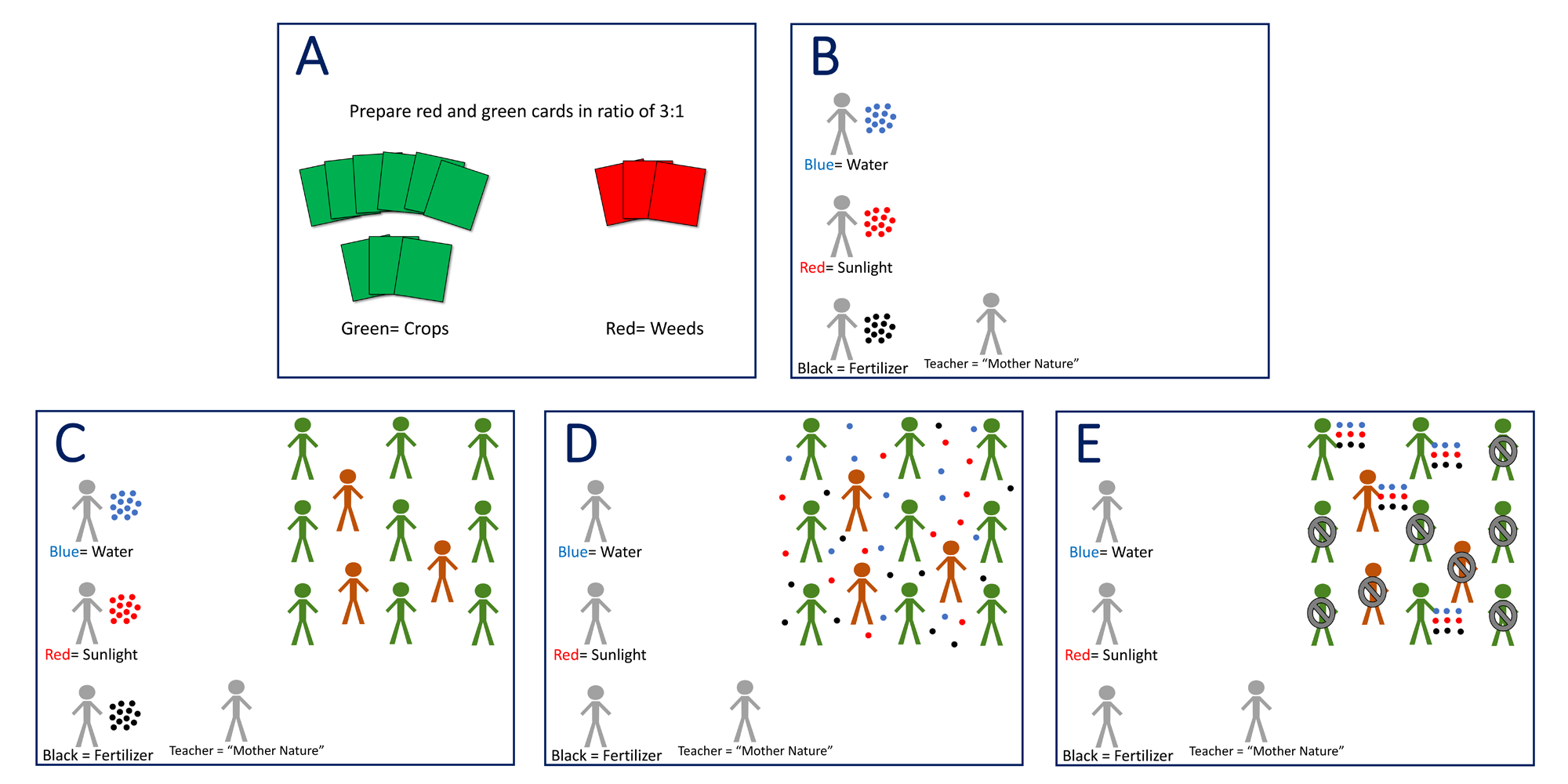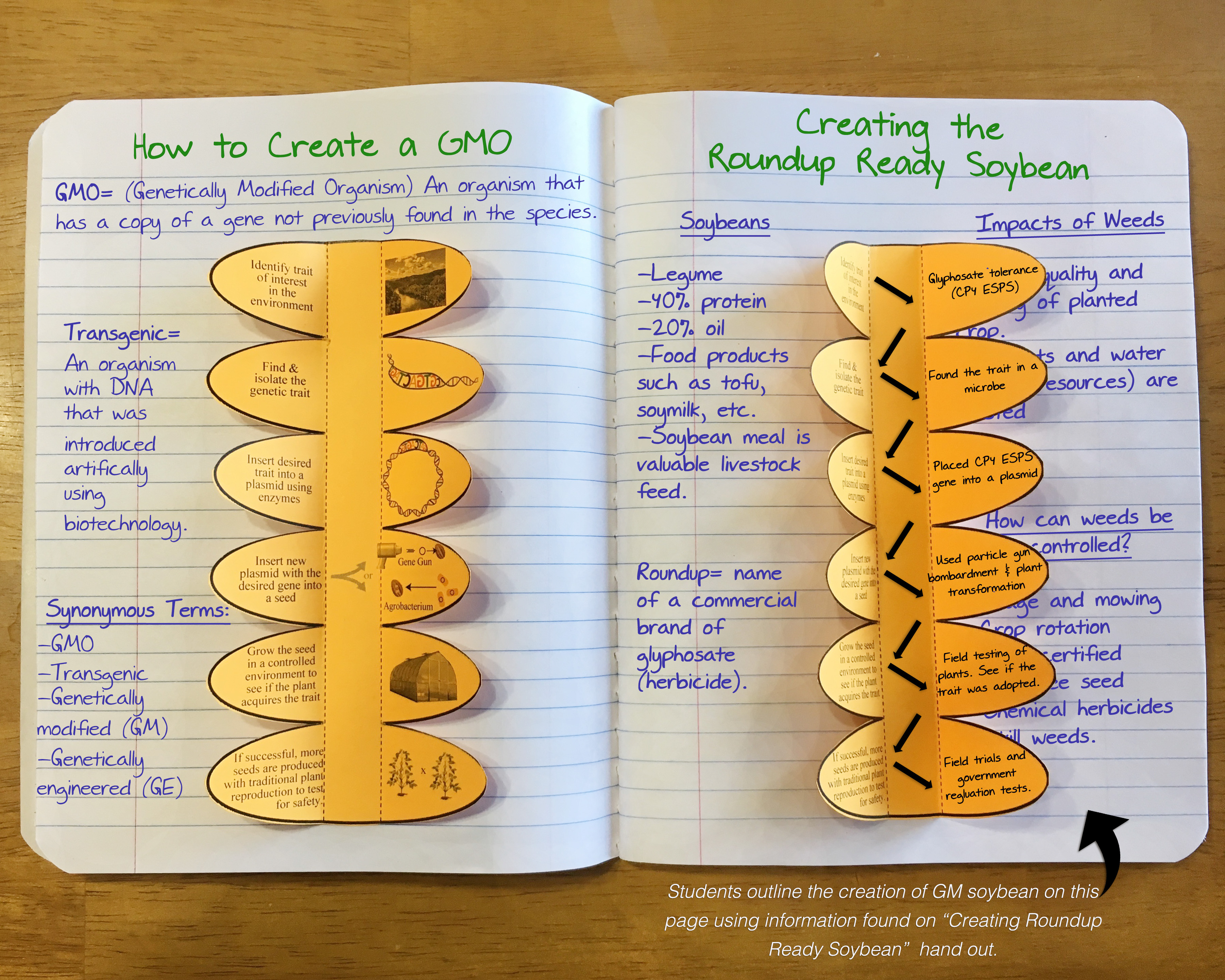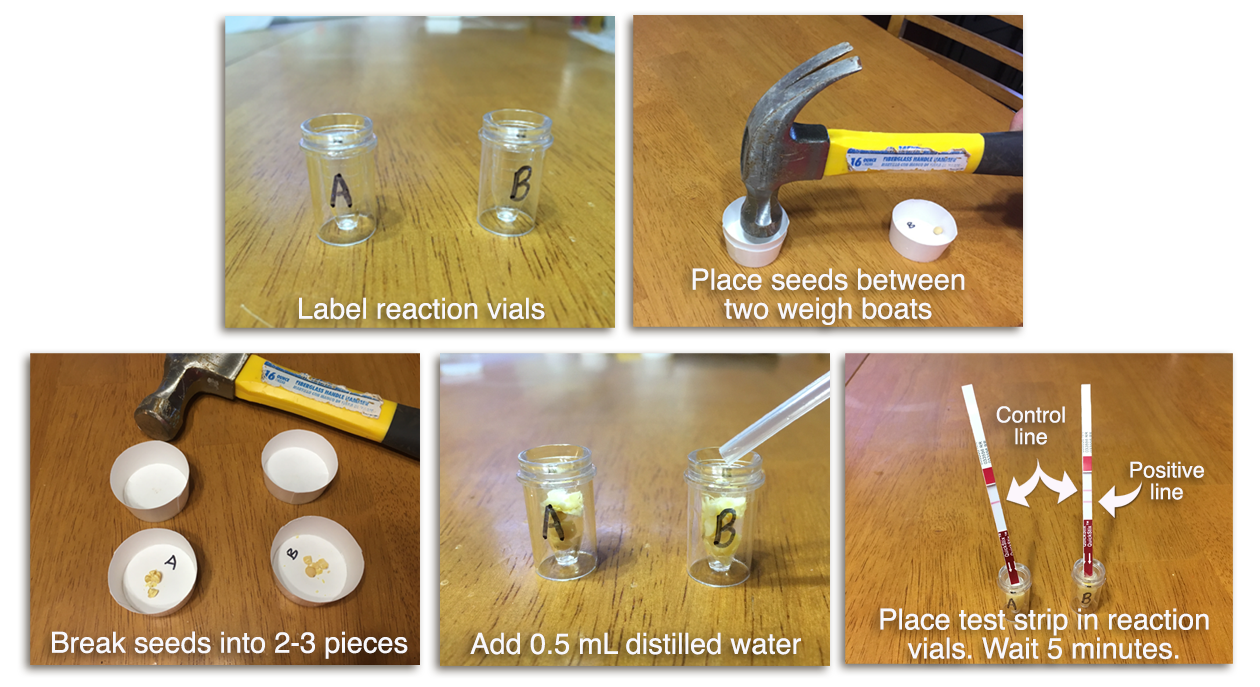The Science of GMOs
Students will map the scientific process of creating a bioengineered (GMO) plant, compare bioengineered soybean seeds to conventional soybean seeds, describe the impact weeds have on plant growth, and understand how a bioengineered seed can help farmers manage weeds.
Background
Lesson Activities
Recommended Companion Resources
Credits
Author
Andrea Gardner and Debra Spielmaker | National Center for Agricultural Literacy (NCAL)
Acknowledgements
With permission, portions of this lesson were adapted by the National Center for Agricultural Literacy from the original lesson packet, Crop Biotechnology: Growing and Testing Roundup Ready Soybean provided by Monsanto in 2018. The lesson was revised again in 2022.
Sources
- https://www.ers.usda.gov/data-products/adoption-of-genetically-engineered-crops-in-the-us.aspx
- https://gmoanswers.com/ask/when-did-humans-first-start-genetically-modify-food-and-why
- http://www8.nationalacademies.org/onpinews/newsitem.aspx?RecordID=23395
- https://en.wikipedia.org/wiki/History_of_plant_breeding
- https://www.biofortified.org/2015/07/crop-modification-techniques-infographic/
- http://www.biologydiscussion.com/plants/protoplasts-plants/protoplast-fusion-meaning-methods-and-its-mechanisms/26481
- http://www.aphis.usda.gov/brs/aphisdocs/93_25801p.pdf
- http://sitn.hms.harvard.edu/flash/2015/how-to-make-a-gmo/
- http://www.agriinfo.in/default.aspx?page=topic&superid=1&topicid=350
- http://www.acsh.org/news/2016/04/22/crispr-edited-foods-coming-to-a-store-near-you-soon
- https://extension.psu.edu/introduction-to-weeds-and-herbicides
- http://www.agbioforum.org/v2n2/v2n2a02-carpenter.htm
- https://www.ers.usda.gov/data-products/adoption-of-genetically-engineered-crops-in-the-us/recent-trends-in-ge-adoption.aspx
- https://www.nap.edu/read/10977/chapter/5#43
- https://www.isaaa.org/resources/publications/briefs/52/download/isaaa-brief-52-2016.pdf
- https://www.biofortified.org/2014/02/conservation-tillage/
- http://www.annualreviews.org/doi/abs/10.1146/annurev-arplant-050213-040039
Standards
Indiana Content Area Standards
-
English Language Arts.Grade 9-10.RV.1
Acquire and accurately use academic and content-specific words and phrases at the college and career readiness level; demonstrate independence in gathering vocabulary knowledge when considering a word or phrase important to comprehension or expression.
- Vocabulary Building.9-10.RV.2.1: Use context to determine or clarify the meaning of words and phrases.
- Vocabulary Building.9-10.RV.2.5: Select appropriate general and specialized reference materials to find the pronunciation of a word or determine or clarify its precise meaning, part of speech,or etymology.
-
English Language Arts.Grade 9-10.SL.1
Listen actively and adjust the use of spoken language (e.g., conventions, style, vocabulary) to communicate effectively with a variety of audiences and for different purposes.
- Comprehension.9-10.SL.3.2: Evaluate a speakers perspective, reasoning, and use of evidence and rhetoric, identifying any fallacious reasoning or distorted evidence.
- Discussion and Collaboration.9-10.SL.2.1: Initiate and participate effectively in a range of collaborative discussions on grade-appropriate topics, texts, and issues, building on others ideas and expressing personal ideas clearly and persuasively.
-
English Language Arts.Grade 11-12.RV.1
Acquire and accurately use academic and content-specific words and phrases at the college and career readiness level; demonstrate independence in gathering vocabulary knowledge when considering a word or phrase important to comprehension or expression.
- Vocabulary Building.11-12.RV.2.1: Use context to determine or clarify the meaning of words and phrases.
- Vocabulary Building.11-12.RV.2.5: Select appropriate general and specialized reference materials, to find the pronunciation of a word or determine or clarify its precise meaning, part of speech, etymology, or standard usage.
-
English Language Arts.Grade 11-12.SL.1
Listen actively and adjust the use of spoken language (e.g., conventions, style, vocabulary) to communicate effectively with a variety of audiences and for different purposes.
- Comprehension.11-12.SL.3.2: Evaluate a speakers perspective, reasoning, and use of evidence and rhetoric, as well as assessing stylistic choices such as word choice, points of emphasis, and tone.
- Discussion and Collaboration.11-12.SL.2.1: Initiate and engage in a range of collaborative discussions on grade-appropriate topics, texts, and issues, building on others ideas and expressing personal ideas clearly and persuasively.






